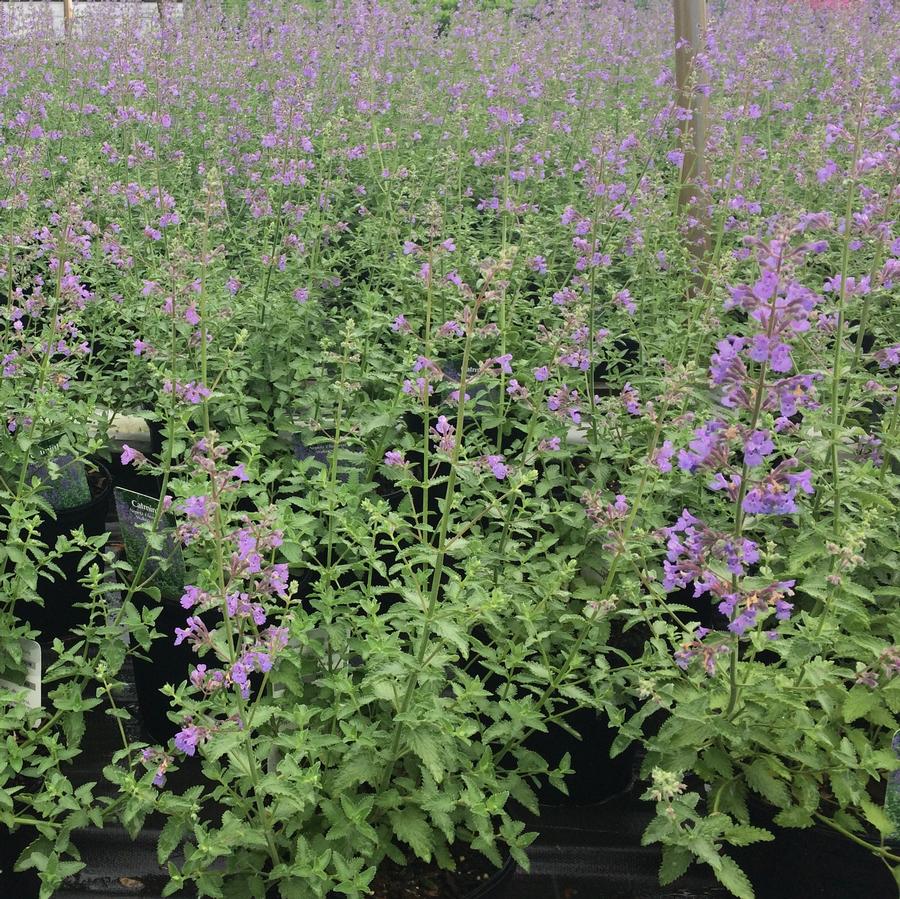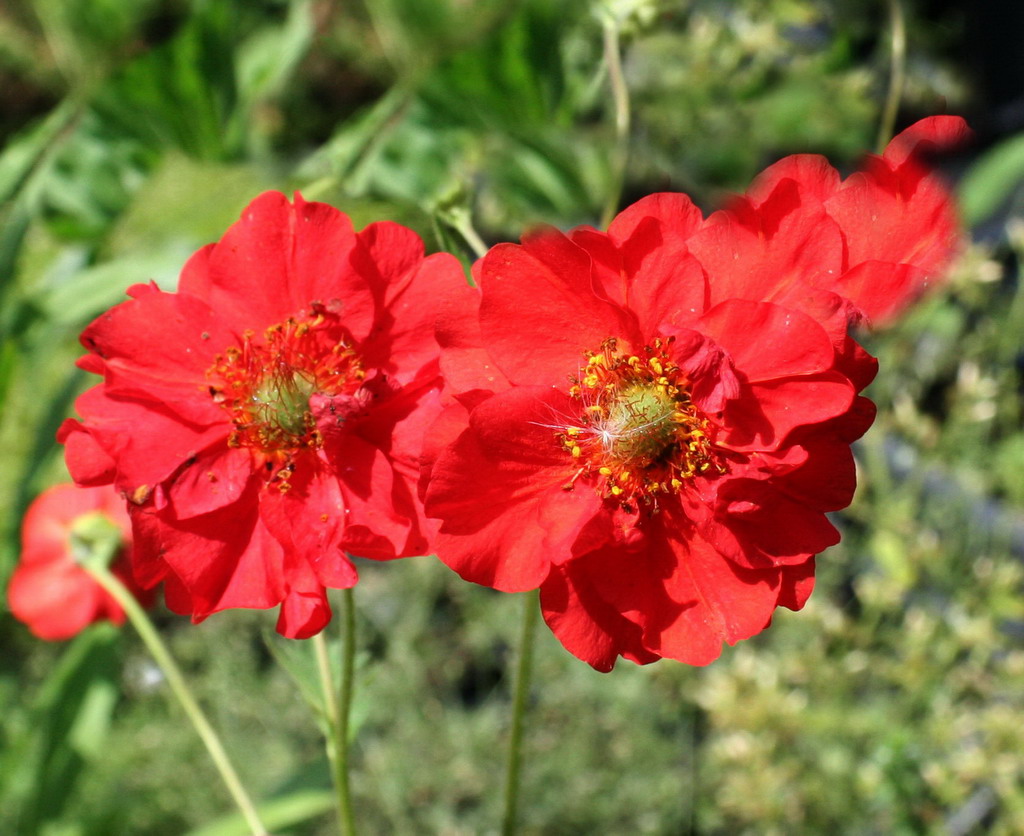Why is the daylily the perfect perennial?
The daylily is sometimes referred to as the perfect perennial because it is:
- Available in a rainbow of colors and a variety of shapes and sizes.
- Able to survive with very little care in a wide range of climates.
- Suitable for all types of landscapes.
- Drought tolerant when necessary, with relatively few pest and disease problems in most gardens. See descriptions of pests and diseases that may be encountered .
- Adaptable to various soil and light conditions.
- Known to bloom from late spring until autumn.
DUKE OF GASCONE, 6.5” FLOWER, 4 WAY BRANCHING, 24 BUDS ON A 27” SCAPE. DUKE OF GASCONE HAS CAUSED MUCH EXCITEMENT IN THE GARDEN AND ITS SEEDLINGS HAVE SOLD AT AUCTION FOR OVER $300.00 . THE COLOR IS AN INCREDIBLE CLEAR BURGUNDY RED. THE GOLD EDGE IS ONE OF THE HEAVIEST I HAVE SEEN, ONE HALF TO THREE FOURTHS OF AN INCH DEEP. THE FLOWERS ARE HELD ON STRONG SCAPES AND WELL PRESENTED ABOVE THE DARK GREEN FOLIAGE. POLLEN IS FERTILE. REBLOOM THREE TIMES IN SOUTH GEORGIA.
What are the parts of a daylily?
The daylily can be characterized as a clump-forming, herbaceous perennial with fibrous or somewhat tuberous roots. The daylily has four fairly distinct growing parts.
- Roots
- The roots of a daylily are long, slender, and fibrous. Or, they may be enlarged into spindle-shaped tubers with additional roots at their bases. The roots absorb water and minerals for use by the plant, and serve as storehouses for food produced by the leaves.
- Crown
- The crown of a daylily is the stem of the daylily plant. It is the solid white core located between the leaves and the roots. The crown produces leaves and scapes from its upper surface. The roots are produced from its sides and lower surface.
- Leaves
- The leaves of daylilies are long, slender, and grass-like. They have a prominent center rib on the underside. The leaves are arranged opposite each other on the crown, giving a flattened appearance which causes the plant to be referred to as a "fan." Multiple fans of a single plant form a "clump."
- Scape
- The scape of a daylily is a leafless stalk which bears the flowers. Most have two or more branches, each bearing several flower buds. Below the branches, the stalks have a few leaf-like "bracts." Sometimes, a small plantlet grows at the junction of a bract and the scape. This is called a "proliferation" and can be rooted to produce another plant.
MARTINIS Color: lilac base with a blue eye etched in purple together with a triple edge of purple, blue, and white teeth. Scape height, 29 inches; bloom size 5.5 inches; bloom season Early-Midseason, Rebloom; ploidy:Tetraploid
How do I obtain daylilies?
Daylilies can be obtained from commercial sources, friends, and society auctions.
-
- Commercial Sources
- Many commercial nurseries and individual daylily growers sell daylilies. Consider the following recommendations:
- Visit nurseries and AHS Display Gardens in your area during the daylily bloom season and see which cultivars appeal to you and which ones grow well locally.
- Annually, the American Hemerocallis Society publishes an Available Source List of daylily growers in the spring issue of the Daylily Journal.
- Many commercial daylily growers listed in the Available Source List offer color brochures listing their daylilies. Many mail their brochures free to members of the American Hemerocallis Society.
- A number of commercial daylily growers now have WWW Home Pages on the Internet.
- Society Sales and Auctions
- Local and regional daylily societies often hold plant sales and auctions. Auctions are held at meetings or by mail. There is even an auction at each AHS National Convention.
-
- Friends
- Because daylilies usually multiply fast and need to be divided periodically, daylily fanciers often share some of their increase with new growers.ALIEN DNA; A rich lavender raspberry bi-tone with yellow applique throat and green heart. The petals have darker veins and ruffled edges. ALIEN DNA has tall, sturdy scapes with three to four-way branching and 26 buds. Very hardy with dependable rebloom. ALIEN DNA is an excellent parent and fertile both ways.Extremely limited.
How much do daylilies cost? Daylily prices range from as low as $3 to as much as $500 for a single plant.
- Do not be scared off by the high price as there are thousands of excellent daylilies in the $3 to $10 price range.
- Only the newest daylilies or significant advances in breeding bring prices of $100 to $300.
Some recent tetraploid conversions in very limited supply demand the highest prices. - New growers should venture cautiously into high-price expenditures that might bring disappointment because of high expectations based on high price. DOUBLE CLASSIC; Best known for its incredible sweet fragrance, this daylily sports magnificent, full double blossoms. Beautiful clear peach flowers with a yellow halo and green throat. Petals have perfect pie crust edges and smooth sepals. Blooms appear in late June - early July. Award winner. Reblooms. -
When is the right time to plant daylilies? -
- North
- In the North, spring planting is normally preferred. Fall planting in colder climates can prove fatal for daylilies because they often do not have adequate time to form new roots and to begin to anchor themselves before winter comes. Experienced gardeners, however, can plant in the fall provided they:
- Know the hardiness of the plants
- Take some preventative measures such as mulching.
- Learn the time of the year after which it is not safe to plant in their location
South - In the far South, early spring or very late fall are the most desirable planting times. Please be aware that daylilies planted in July, August, or September when temperatures and humidity are extremely high (i.e., over 90°), face a high probability of rotting.DESTINED TO SEE Daylily, Spider Lily; Ivory ruffled petals with a deep mauve purple eye and edge surround a yellow throat. An alluring flower-in-a-flower look. A beautiful early bloomer.Hemerocallis Destined to See, a tetraploid, was selected for its abundant blossoms, vibrant colors, and hardiness in a variety of climates and soils. Drought tolerant once established. Color: cream lavender with violet-blue watermark outlined violet-purple, yellow to green throat and violet purple edge outlined with silver. Scape heigh 32 inches; bloom size 6.5 inches, bloom season, Midseason, Rebloom
Where is the best place to plant daylilies? You need to consider four things in determining where to plant your daylilies:
- Sun or Shade
- Most daylilies do best in full sun. They will tolerate part-shade conditions, but require a minimum of six hours of direct sun per day.
- Light yellow cultivars, many shades of pink, and delicate pastels need full sun to bring out their lovely colorings.
- Many red and purple cultivars benefit from partial shade in the hottest part of the day because dark colors absorb heat and do not withstand the sun as well as lighter colors.
- Type of Soil
- Like most plants, daylilies show maximum performance in soils with good aeration, fertility and microbial activity. The ideal soil holds sufficient moisture to sustain the plants, yet is at the same time well-drained. These characteristics can be improved in soils that have too much sand or clay by amending with compost.
- Drainage
- For maximum performance, daylilies should be planted in well-drained soil. In some regions raised beds may be beneficial where drainage is a problem. However raised beds should be approached with caution in cold winter regions as being elevated can make the plants more vulnerable to temperature extremes and fluctuations. Note also that raised beds generally require more irrigation during the summer.
-
Compatibility with Other Plants
- Daylilies may not do well near or under trees that compete for moisture and nutrients. They are often reported to do well under pine trees, however, and each situation should be assessed individually. Plants that must compete with tree roots often do better if supplied with extra waterings.ELEGANT UNIVERSE; Pink with gold edge above green throat; Scape height 30 inches; bloom size 6.5 inches; bloom season Early,
Rebloom; Tetraploid
How do I plant my daylilies? When you receive your new daylilies, use the following technique for planting them.
- After Plants Are Received
- New daylily plants received bare-root by mail may be "parked" in damp sand or other suitable media until they can be planted. Many daylily enthusiasts like to soak the roots for a few hours or overnight in a bucket of water, however others do not agree with this practice. Some gardeners also include a weak fertilizer in the soaking water, but this isn't necessary and, if too strong a solution, may actually be detrimental.
- Before Planting
- Make sure that your daylilies are clean and healthy before planting them.

Prepare the Soil - The soil where you intend to plant your daylilies should be worked into a good loose condition to a depth of at least 1 foot.
- Dig a hole larger than the root mass.
- Make a mound in the center of the hole.
- Set the plant in place with the roots spread on all sides of the mound.
- New plants should be planted about as deep as they grew originally. The original depth can be determined easily by the band of white at the base of the foliage which indicates the part of the plant which was underground.
- Do not set the crown (i.e., the point where foliage and roots join) more than 1 inch below the surface of the soil.
- Work the soil around and between the roots as you cover the plant.
- Firm the soil and water well.
- Make sure that there are no air pockets; this can cause the plant to grow poorly.
- When all the water has soaked in, finish filling in the soil, leaving a slight depression around the plant.
-

-
Spacing
-
Daylilies should be spaced no less than 18 to 24 inches apart on each side.
-
-
Labeling
-
Label each of your daylilies with some type of permanent marker so as to identify them. A plant loses much of its value when its identification is lost.
What is the difference between diploid and tetraploid daylilies?
Plants all have a basic complement of chromosomes. Most plants are diploid they have two identical sets of chromosomes in each cell. Polyploids are plants with more than two sets of chromosomes. A tetraploid is only one of a whole series of polyploids. Triploids have three sets of chromosomes, tetraploids have four sets of chromosomes, et cetera.
they have two identical sets of chromosomes in each cell. Polyploids are plants with more than two sets of chromosomes. A tetraploid is only one of a whole series of polyploids. Triploids have three sets of chromosomes, tetraploids have four sets of chromosomes, et cetera.
Tetraploid
Tetraploid daylilies are heralded by some growers as having a number of advantages over diploids. In the tetraploid:
-
Flowers tend to be larger.
-
Colors of the flower tend to be more intense.
-
Scapes tend to be sturdier and stronger.
-
Substance of both flower and foliage tend to be heavier.
-
Vegetative vigor in leaf, stem, and flower tend to be greater.
-
Breeding possibilities tend to be greater because of an increased number of chromosomes
- Diploid
-
Diploid daylilies continue to charm growers with their exquisite flower form, grace, and color.
- Good pink daylilies are still more prevalent in the diploid ranks.
- Spider and double daylilies are still more prevalent in the diploid ranks.
- Diploid daylilies are easier to cross than tetraploids.
- Many diploid daylilies have been converted to tetraploids, thus advancing the tetraploid lines.
- There are more diploids than tetraploids.
How do I care for my daylilies?
The wise daylily gardener will apply a proper cultural program which includes watering, fertilizing, mulching, possibly spraying, grooming, controlling weeds, and sanitation.
- Watering
- Water is essential for good daylily performance.
- Water, supplied in sufficient amounts, almost certainly increases the number and size of daylily blooms.
- For daylilies, watering is most important in spring when the plants are making scapes and buds, and in the summer during the bloom season.
- Daylilies benefit more from deep watering, which reaches 8 to 10 inches into the soil, than from a succession of brief, surface waterings.
- Caution 1: Overhead watering during the heat of the day will cause any open blooms to spot and/or wilt.
- Caution 2: Watering in the evening can also cause spots on the next day's blooms.
- Caution 3: Be careful not to over water.
- Fertilizing
- Daylilies grow in a wide range of soils and conditions.
- To determine the nutrient needs of your soil, take a soil sample and have it analyzed. Contact your local county agricultural agent for instructions.
- Daylilies can do well over a relatively wide soil pH range and adjustment of pH need only be considered if the plants appear to be doing poorly. A soil test as recommended above should always be conducted before amending with sulfur or lime.
- In the average home garden, a single fertilizer application in the spring is usually sufficient, although even that may not be necessary every year.
- In extremely poor soils or on light or sandy soils which tend to leach badly, more frequent application may be required. Consult with your local agriculture office for recommendations suitable to your soil and climate.
- Mulching
- Mulching, although not essential in every area, generally does contribute to better daylilies by improving the soil and helping retain moisture.
- Grooming
- Keep your garden neat and tidy.
- Many gardeners remove the day's blooms at the end of the day to give their gardens a pristine appearance.
- If you hybridize, expect to leave the pollinated blooms on the plants until the blossom sheds and the tiny seed pod is formed.
The above daylily questions and answers have been summarized from The Illustrated Guide to Daylilies, a publication of the American Hemerocallis Society (AHS).










